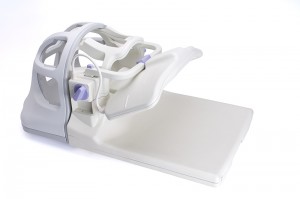So, how does urethane casting actually work? Of course, you can make about anything you want, but the process doesn’t vary too much. Let’s get started.

The Basic Process
Casting generally begins with a stereolithography (SLA) master pattern of the prototype. The pattern is inspected for accuracy, refined and prepared for a silicon rubber mold (SRM).
To create the SRM, a process called room temperature vulcanization or RTV is used. The part, again, is inspected to determine the best setup. Parting lines are set and gates and vents are considered to ensure the best mold fill and minimize bubbles.
Finally, silicon is poured around the SLA master to create the mold. After the silicon has had time to cure, the pattern is removed. The mold is put back together, and urethane material is poured into the mold and the part is created.
A few things you should know…
- Urethane casting is not extremely precise. Basically you have a master, an RTV mold, and then the urethane casting. The RTV mold is a copy and the urethane casting is a copy of a copy. The parts aren’t going to be as sharp as the original.
- If you need elastomers (soft parts that retain their shape), urethane castings are the only choice. Urethane castings with a need for a durameter as low as 20 Shore A can be made with this process.
- Low quantities are a good thing. In most cases, a urethane casting made with the process listed above becomes cost effective at 6 to 8 pieces. RTV molds can stand up to as many as 20 copies before they need to be replaced.
— Urethane castings look great. When the marketing folks need something to show to a potential client, urethane makes the best impression.
Details matter when it comes to product development, and Product Development Solutions stays on top of them all. Contact our team today and watch the best products in the business take shape.
